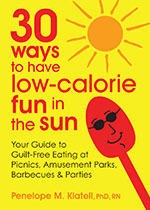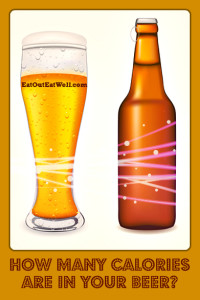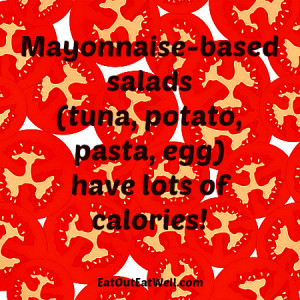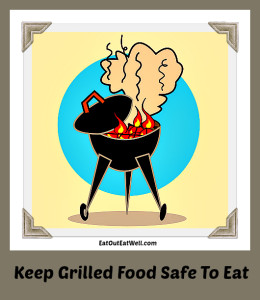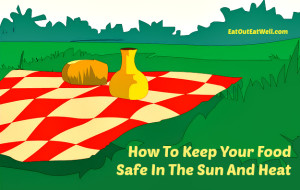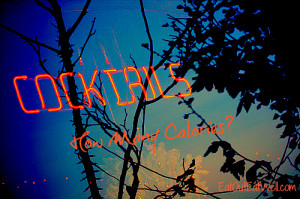 Do you know that a standard alcoholic drink (in the US) is a drink that contains the equivalent of 14.0 grams (0.6 ounces) of pure alcohol.
Do you know that a standard alcoholic drink (in the US) is a drink that contains the equivalent of 14.0 grams (0.6 ounces) of pure alcohol.
That’s the amount of pure alcohol usually found in:
- 12 ounces of beer
- 8 ounces of malt liquor
- 5 ounces of wine
- 1.5 ounces or a “shot” of 80-proof distilled spirits or liquor (gin, rum, vodka, or whiskey, etc.)
And, alcohol doesn’t fill you up the way food does because it doesn’t register as “food” in your GI tract or brain. Even though it doesn’t fill you up, it does have calories — 7 calories a gram – more than carbs and protein which clock in at 4 calories a gram and fat which has 9. It may not feel as though you’re putting calories into your body, but the fact is you can drink a lot of calories and still not feel stuffed (perhaps drunk, but not stuffed).
Is It Safer To Have Beer Or Wine Instead Of A Cocktail?
No. A 12 ounce bottle of beer has about the same amount of alcohol as a 5 ounce glass of wine or a 1.5 ounce shot of liquor. Since it is the amount – not the type — of alcohol in your drink that affects you the most, it is not safer to drink beer or wine rather than liquor if you are drinking the same amount of alcohol.
In other words, whether you have two 5 ounce glasses of wine, two 12 ounce bottles of beer, or two 1.5 ounces of liquor either straight or in a mixed drink — you are drinking the same amount of alcohol.
Alcohol And Mixers
The higher the alcoholic content (proof), the greater the number of calories:
- 80-proof vodka (40% alcohol, the most common type) has 64 calories/1oz
- 86-proof vodka (43% alcohol) has 70 calories/1 ounce
- 90-proof vodka (45% alcohol) has 73 calories/1 ounce
- 100-proof vodka (50% alcohol) has 82 calories/1 ounce
When you start adding mixers, the calories in a drink can more than double.
- club soda has no calories
- 8 ounces of orange juice has 112 calories
- 8 ounces of tonic has 83 calories
- 8 ounces of ginger ale has 83 calories
- 8 ounces of tomato juice has 41 calories
- 8 ounces of classic coke has 96 calories
- 8 ounces of cranberry juice has 128 calories
Mixed drinks and fancy drinks can significantly increase the calorie count. The following calories are approximate – bartenders, recipes, and the hand that pours all vary. Use these figures as a guideline.
- Frozen margarita: (4 ounces) 180 calories; (the average margarita glass holds 12 ounces), 540 calories)
- Plain martini (2.5 ounces): 1 60 calories
- Mimosa (4 ounces): 75 calories
- Gin and Tonic (7 ounces): 200 calories
- Mojito: (8 ounces): 214 calories
- Pina Colada (6 ounces): 378 calories
- Cosmopolitan (4 ounces): 200 calories
- Skinnygirl margarita (4 ounces): 100 calories
- Green apple martini (1 ounce each vodka, sour apple, apple juice): 148 calories
- Bloody Mary (5 ounces): 118 calories
- Coffee liqueur (3 ounces): 348 calories
- Godiva chocolate liqueur (3 ounces): 310 calories
- Vodka and tonic (8 ounces): 200 calories
- Screwdriver (8 ounces): 190 calories
- Long Island Iced Tea (8 ounces): 780 calories
- White Russian (2 ounces of vodka, 1.5 ounces of coffee liqueur, 1.5 ounces of cream): 425 calories
- P.F. Chang China Bistro Mai Tai: 433 calories
- Rum and Coke (8 ounces): 185 calories
- Chocolate martini: (2 ounces each of vodka, chocolate liqueur, cream, 1/2 ounce of creme de cacao, chocolate syrup): 438 calories
- Jumbo and super-sized drinks with double shots and extra mixers could add up to 1,000 calories or more (a single giant glass of TGI Friday’s frozen mudslide has around 1,100 calories)
